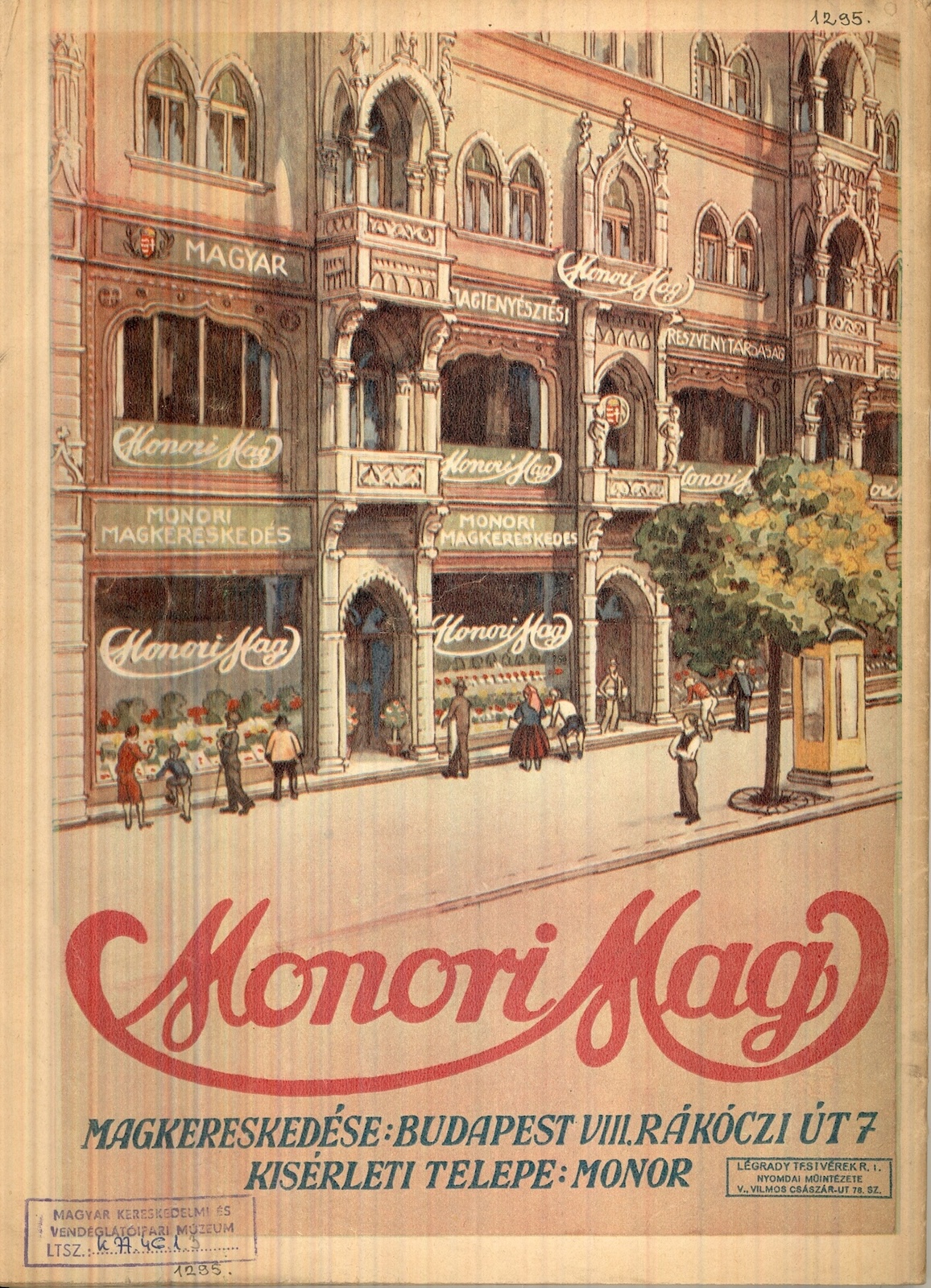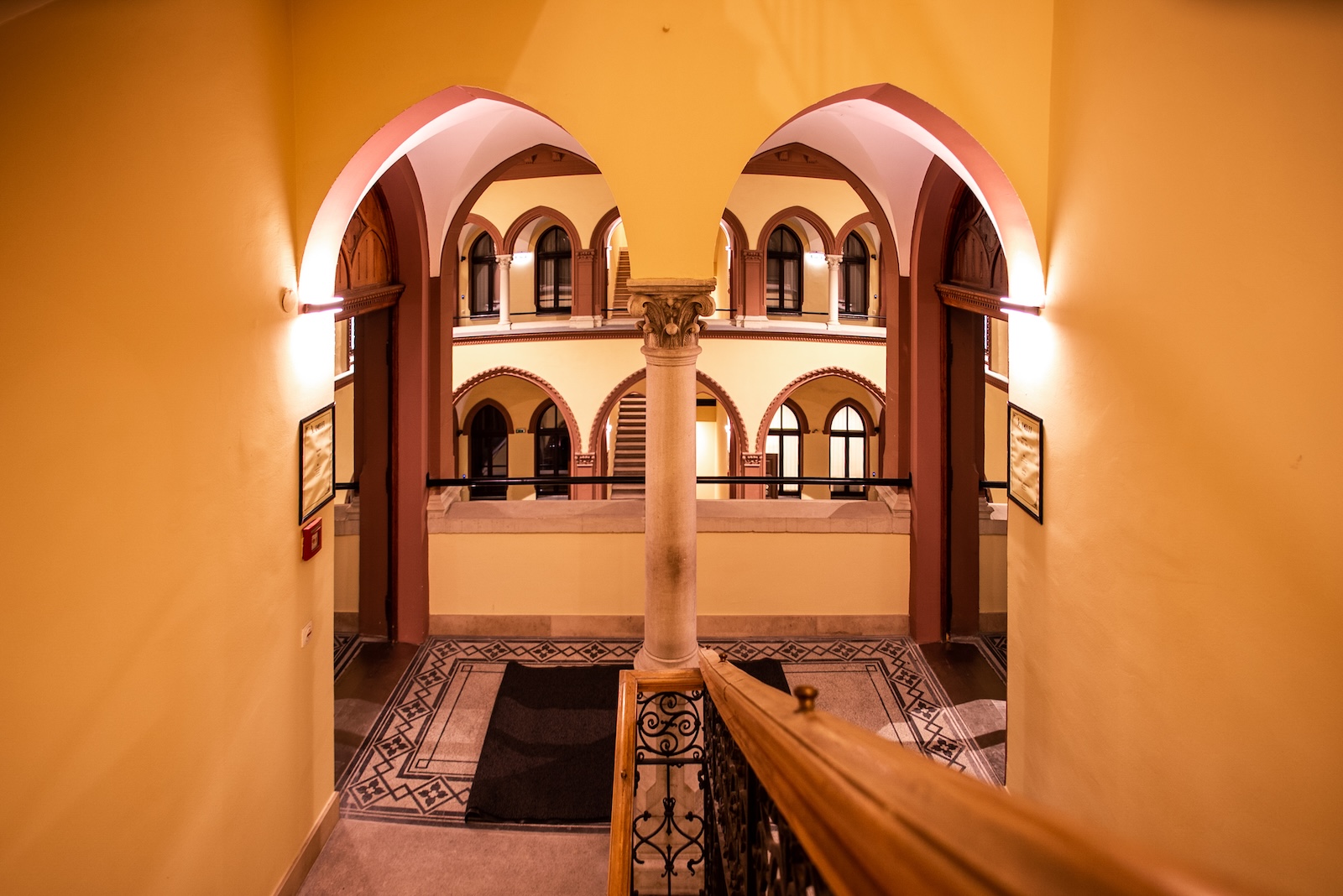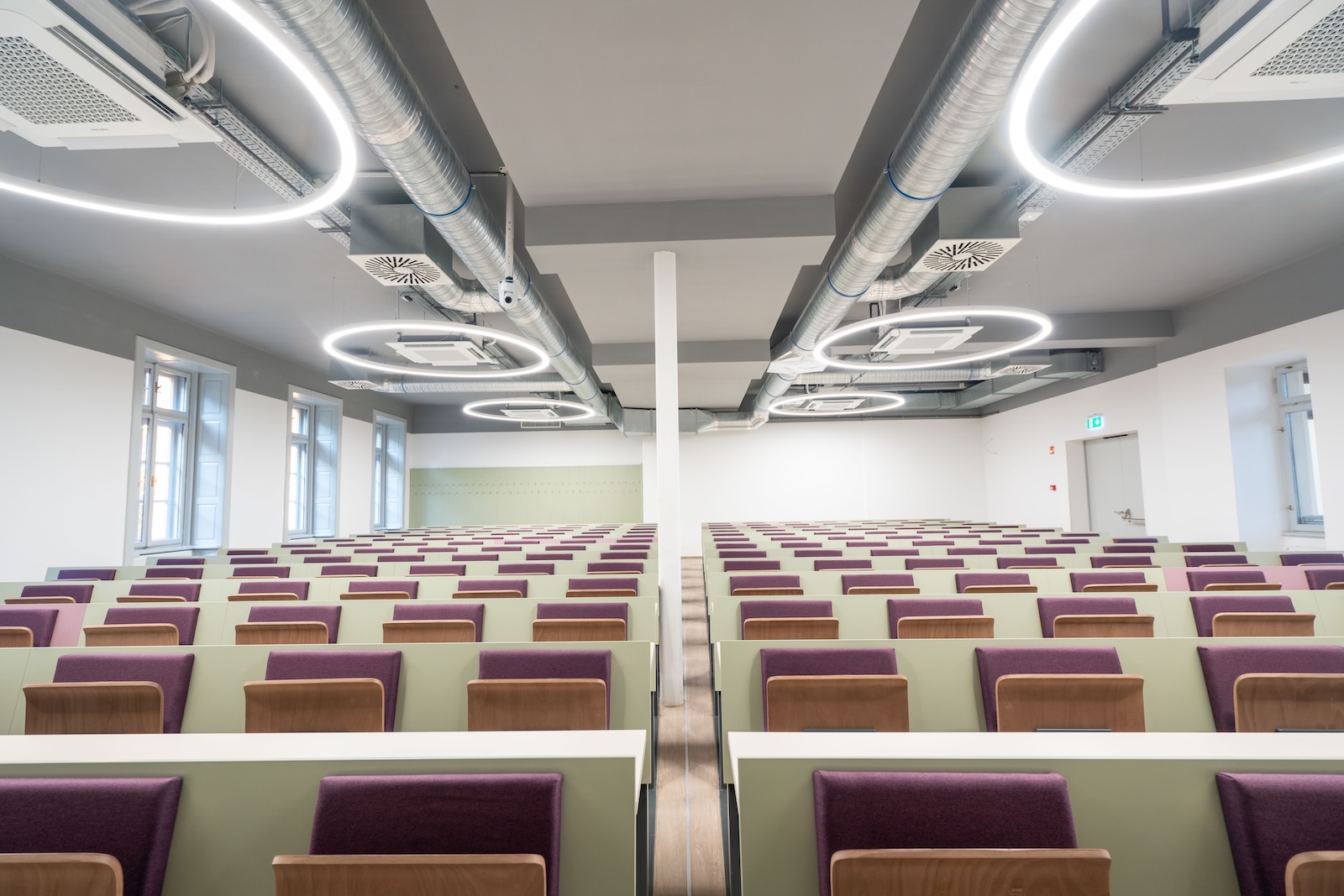Where we teach: a few words about our campus

Many Hungarian universities have beautiful buildings. We could think of the Art Nouveau Liszt Ferenc University of Music from the early 1900s, the Hungarian Academy of Fine Arts with its Neo-Renaissance Boulevard Palace from a few decades earlier, or the modern Lágymányos complex of buildings of ELTE from the late 20th century. Perhaps even more outstanding among them is the ELTE Faculty of Economics' Q building on Rákóczi út, in the heart of the city centre.
It is a building that evokes the exotic world of the East, where even the stained-glass windows of the boardroom, the wrought-iron banisters of the staircases and the arches of the windows are in harmony with each other. Its creator is Henrik Schmahl, a Hungarian-born German architect. He is also responsible for the famous Parisian Court on Ferenciek Square, a building covered in "Zsolnay ceramics and Salzburg marble". No wonder its beauty and intricate workmanship attract visitors from abroad.
Schmahl is interesting not only because of his works, but also because he came to Hungary from Hamburg as an assistant mason and made his way up from there. Miklós Ybl, one of Hungary's greatest architects, noticed him in 1870 while building the Vámpalota (now the Corvinus University in Budapest) and found him so talented that he paid for his architectural studies.
He worked alongside Ybl on the Neo-Renaissance Opera House and the Várkert Bazaar, among other projects, before embarking on a career as an architect - at first mostly in Neo-Renaissance style.
However, he soon changed styles and following his travels in Italy and Spain, designed buildings in Moorish style, including the Alhambra in Spain. The most notable of these, not only in Schmahl's oeuvre but in Budapest as a whole, is the aforementioned Parisian Courtyard, just a few minutes' walk from the GTK campus. Heading in the opposite direction along Rákóczi Street, you will quickly reach the Uránia Cinema, also in Moorish style, designed by him.
The most interesting building, at 7 Rákóczi út, was designed by Schmahl in 1891 for the textile merchant Károly Stern. It later housed several fashion shops, a hat factory and shop, the National Clothing House in the 1930s, a seed shop and, during the socialist era, the Hungarian Urbanist Association.

Marketing at the time: advertising poster of the Monor Seed Trade, showing the facade of today's Q building.
Today this building is the central campus of ELTE's Faculty of Economics. In addition to the many classrooms, it houses the Student Office, the International Office, the lecturers' rooms, the Student Union and several student rooms on the ground floor. If you have a few minutes between lectures or seminars, you can discover the special beauty of "the house" for yourself. For example, the murals and two frescoes by the famous artist of the time, Charles Lotz; the stucco decorating the facade; the stone lacework; the columns with human heads - and so on.
And, of course, the unique atmosphere of the whole campus, which provides an ideal environment for those who wish to study here at the beginning of the 21st century.

Moroccan-style staircase
The ever-increasing number of students has necessitated further major improvements to the infrastructure. The ground floor of the building on the corner of Rákóczi út and Szentkirályi utca now houses the GTK Examination Centre, which opened in October 2021. The first new rooms were built in the central campus building, in the R building next to the Q building, where the Aula, a large lecture hall, three smaller lecture halls and the video room, where students can watch recorded lectures and seminars, will be available for students' convenience.
The next major step was the completion of Building P, which was inaugurated in autumn 2023. The listed three-storey building at 15 Rákóczi út also has a long historical tradition. Its original form was designed around 1830 by one of Hungary's greatest architects, József Hild, who also designed St Stephen's Basilica. In the 19th century it was the White Horse Hotel, where the poet Sándor Petőfi stayed in 1847. In the 1880s the hotel had 66 rooms, a famous restaurant, Hungarian and French cuisine and live music. After the First World War, the upper floors were converted into apartments, while the lower floors were used for shops in the following decades. It was renovated in 1989, when it was used by the Czechoslovak Cultural Centre and later by the Slovak Cultural Centre. The building was completely renovated by the GTK itself and now has five classrooms with 700 seats and a large common area on the ground floor.

One of the large classrooms in Building P
Some of the lectures are held in the Stork's Nest, the emblematic landmark of the Trefort Gardens. This romantic building, decorated with Zsolnay ceramics, was designed by Samu Pecz in 1898. It takes its name from the fact that it was originally designed mainly for first-year students. Its two classrooms can accommodate up to 500 students at a time.
Thanks to Pálne Olajos for information on the life of Henrik Schmahl and the building at 7 Rákóczi út.

